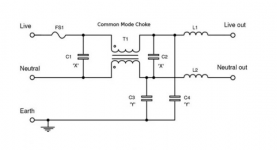Because if I just standardize on 20A then I reduce the likelihood of copy/paste errors by our designer and which-breaker-do-I-need errors by our crew, and I hopefully never have an inspector tell me I need to call for reinspection after I've changed the breaker or resubmitted plans. This may sound like a hypothetical, but it's not.
Also I can just stock hella 20A breakers and not worry so much about the 15s. Which is an issue when you need the hold down types with IQ8s and batteries.
Well, I suppose you're right that with that particular combination I'd put a 40 on the plans, and it's not likely I would use a 50 instead, other than temporarily if I dropped the 40 and broke it, or something like that.
But I sure as hell would breaker a 6kW inverter at 40A on the plans if the manufacturer allowed it, instead of 35A, because they don't make quad-combos with 35A. That one has saved me extra work multiple times.


